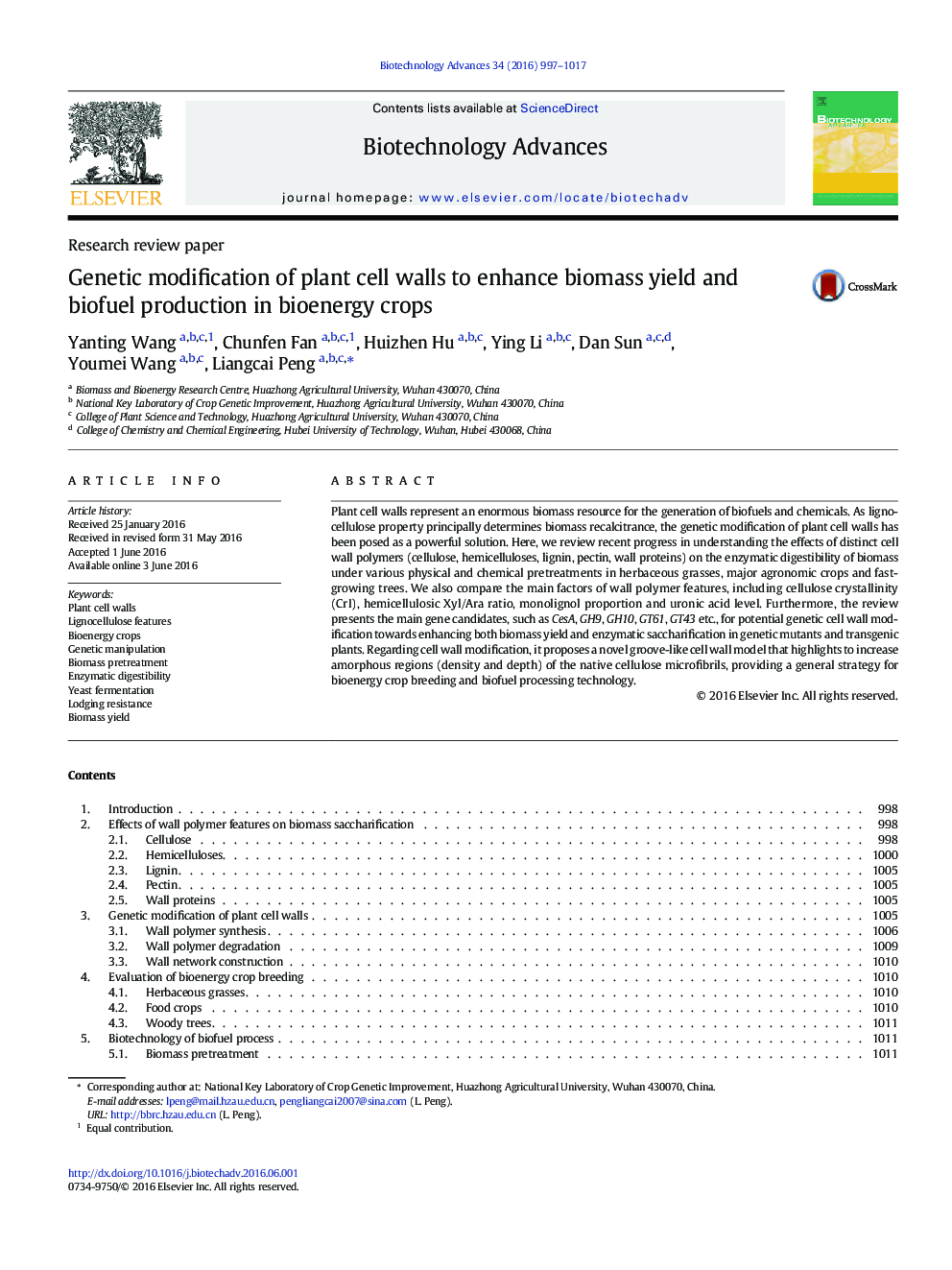| Article ID | Journal | Published Year | Pages | File Type |
|---|---|---|---|---|
| 6451239 | Biotechnology Advances | 2016 | 21 Pages |
â¢Cellulose CrI is key factor on biomass digestibility and plant lodging resistance.â¢Hemicellulose and pectin reduce cellulose CrI for high biomass saccharification.â¢G-monomer exhibits dual effects on biomass digestion, but enhances biomass yield.â¢Increase in amorphous areas of cellulose is optimal on cell wall modification.â¢GH9, GH10 and GT61 are major genes on cell wall engineering in bioenergy crops.
Plant cell walls represent an enormous biomass resource for the generation of biofuels and chemicals. As lignocellulose property principally determines biomass recalcitrance, the genetic modification of plant cell walls has been posed as a powerful solution. Here, we review recent progress in understanding the effects of distinct cell wall polymers (cellulose, hemicelluloses, lignin, pectin, wall proteins) on the enzymatic digestibility of biomass under various physical and chemical pretreatments in herbaceous grasses, major agronomic crops and fast-growing trees. We also compare the main factors of wall polymer features, including cellulose crystallinity (CrI), hemicellulosic Xyl/Ara ratio, monolignol proportion and uronic acid level. Furthermore, the review presents the main gene candidates, such as CesA, GH9, GH10, GT61, GT43 etc., for potential genetic cell wall modification towards enhancing both biomass yield and enzymatic saccharification in genetic mutants and transgenic plants. Regarding cell wall modification, it proposes a novel groove-like cell wall model that highlights to increase amorphous regions (density and depth) of the native cellulose microfibrils, providing a general strategy for bioenergy crop breeding and biofuel processing technology.
